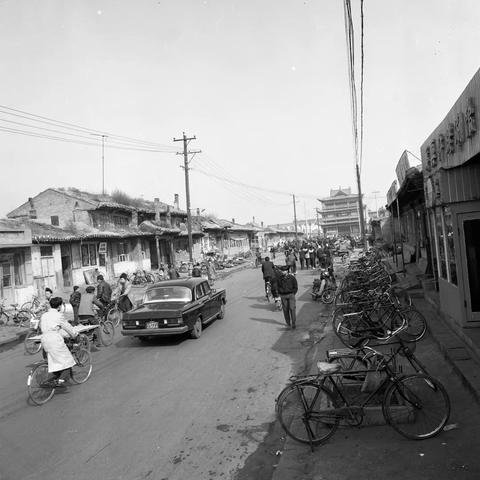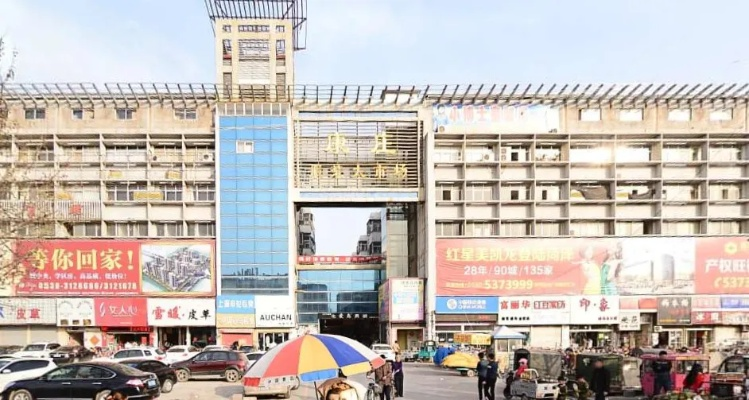The Artisanal Fabrics of Jiangsu:Crafting the Future of Textiles
: The Artisanal Fabrics of Jiangsu: Crafting the Future of Textiles,Abstract:,In Jiangsu province, artisanal fabrics have long been recognized for their intricate designs and meticulous craftsmanship. These textiles, often made from natural fibers like silk, cotton, and linen, are not only a testament to traditional skills but also a symbol of sustainable living. As the region continues to evolve into a hub for modern industry, the artisanal fabrics of Jiangsu are at the forefront of crafting a future that values both tradition and innovation. This paper explores the role of these fabrics in shaping the region's textile industry, highlighting their contribution to cultural heritage and economic prosperity. By preserving these traditions while embracing modern techniques, Jiangsu is positioning itself as a leader in the global textile industry, ensuring that the future of textiles is not only beautiful but also sustainable.
Introduction: Jiangsu, known for its rich history and cultural heritage, is also a hub for traditional handicrafts. In this region, artisans have been crafting textiles with precision and skill for centuries. Today, these traditional methods are being revitalized by modern technology and sustainable practices, creating a new era of textiles that are both beautiful and environmentally conscious.

Artisanal Fabric Production Processes:
-
Preparation of Raw Materials:
- Cotton: The most common material used in Jiangsu's artisanal textiles. It is carefully selected for its softness, breathability, and durability.
- Wool: Used in some high-end garments, wool is prized for its warmth and comfort.
- Silk: A premium material for luxurious fabrics, silk is renowned for its smooth texture and luster.
-
Weaving Techniques:
- Hand-loom weaving: This method involves manually pulling threads through a warp and filling them with cotton or wool to create intricate patterns.
- Traditional looms: These machines are still widely used in Jiangsu, especially for large-scale production. They provide a consistent and reliable output.
-
Dyeing and Printing:
- Natural Dyes: Some artisanal fabrics are dyed using natural plant-based dyes, such as indigo, madder, and mulberry.
- Modern Dyes: For faster production and more uniform color, synthetic dyes are often used.
- Embroidery and Stitchwork: These techniques add a decorative touch to fabrics, enhancing their aesthetic appeal.
-
Finishing:
- Steaming: This process helps to relax the fibers and remove any impurities from the fabric.
- Sizing: To improve the fabric's shape and reduce pilling, it is often finished with a small amount of water-soluble starch.
- Laundering: After the fabric is ready, it undergoes a thorough cleaning process to ensure it meets quality standards.
Case Study: One example of Jiangsu's artisanal textiles is the "Jiangnan Style" silk scarves. These scarves are made using a combination of traditional hand-loom weaving techniques and modern dyeing processes. The scarves are woven with intricate patterns inspired by traditional Chinese motifs, such as lotus flowers and dragon motifs. The silk used in these scarves is sourced locally from small-scale silk farmers who follow sustainable farming practices.
The Jiangnan Style silk scarves are not only beautiful but also eco-friendly. They are produced using organically grown silkworms, which produce silk without the use of harmful chemicals. Additionally, the scarves are finished with a natural dye derived from plants, ensuring they are biodegradable and non-toxic.
Conclusion: Jiangsu's artisanal textiles are not just a reflection of the region's rich cultural heritage; they are also a testament to the skills and dedication of generations of craftsmen. By combining traditional techniques with modern innovations, these textiles continue to evolve, meeting the needs of today's consumers while preserving the essence of their past. As we look to the future, Jiangsu's artisanal textiles offer a glimpse into a world where beauty and sustainability coexist harmoniously.
江苏作为中国的重要纺织大省,拥有丰富的手工纺织品面料资源,这里的手工纺织品面料不仅体现了江苏人民的匠心独运,更承载了深厚的文化底蕴和历史传承,随着全球化的推进和人们生活水平的提高,手工纺织品面料的需求日益增长,江苏的手工纺织品面料产业也迎来了新的发展机遇。
江苏手工纺织品面料概述
- 传统工艺:江苏手工纺织品面料主要采用天然纤维和手工编织技术,注重材料的质地、纹理和手感。
- 种类丰富:从传统的丝绸、麻布到现代的棉布、涤纶面料等,江苏的手工纺织品面料种类繁多,涵盖了各种风格和用途。
- 市场需求:随着人们对生活品质的追求和对环保、健康生活的关注,江苏的手工纺织品面料市场需求日益增长。
案例分析

以下是江苏某地区一家手工纺织品企业的案例,展示了其精湛的手工技艺和丰富的面料资源。
案例:江苏某地区手工纺织品企业
该企业主要生产各种手工纺织品面料,包括丝绸、麻布、棉布等,其产品深受国内外消费者的喜爱,特别是在高端市场占据了一席之地,该企业的手工技艺精湛,注重材料的选择和编织工艺的精细处理,该企业还注重环保和健康,采用天然纤维和环保材料,确保产品的可持续性和健康性。
江苏手工纺织品面料生产工艺与特点
- 生产工艺:江苏手工纺织品面料的生产工艺主要包括原料选择、编织工艺、染色工艺等,在原料选择方面,该企业注重选用高质量的天然纤维和环保材料;在编织工艺方面,该企业采用手工编织技术,注重材料的质地和纹理;在染色工艺方面,该企业采用环保染色技术,确保产品的环保性和健康性。
- 特点:江苏手工纺织品面料具有以下特点:质地柔软、手感细腻、色彩丰富、图案精美等,该面料还具有很好的吸湿性、透气性和保暖性,适合各种不同的使用场景,该面料还注重环保和健康,符合现代消费者的需求和趋势。
江苏手工纺织品面料的市场前景与展望
随着全球化的推进和人们生活水平的提高,江苏的手工纺织品面料市场前景广阔,该地区的手工纺织品面料产业将继续发展壮大,同时还将注重产品的创新和质量提升,满足消费者的不断增长的需求,该地区还将加强与国际市场的合作和交流,拓展国际市场。
英文表格补充说明
以下是英文表格补充说明江苏手工纺织品面料的相关信息:
表格1:江苏手工纺织品面料种类与特点
| 类别 | 种类 | 特点 |
|---|---|---|
| 主要材料 | 天然纤维 | 质地柔软、手感细腻、环保健康 |
| 编织工艺 | 手工编织技术 | 注重材料的质地和纹理 |
| 市场前景 | 广阔 | 随着全球化的推进和人们生活水平的提高,需求日益增长 |
| 相关案例 | 示例企业名称 |
江苏作为中国的重要纺织大省,拥有丰富的手工纺织品面料资源,随着全球化的推进和人们生活水平的提高,江苏的手工纺织品面料产业将继续发展壮大,该地区还将注重产品的创新和质量提升,满足消费者的不断增长的需求,希望这篇文章能为读者提供有关江苏手工纺织品面料的更多信息。
Articles related to the knowledge points of this article:
The Standardization of Textile Dimensions and Its Impact on Global Trade



